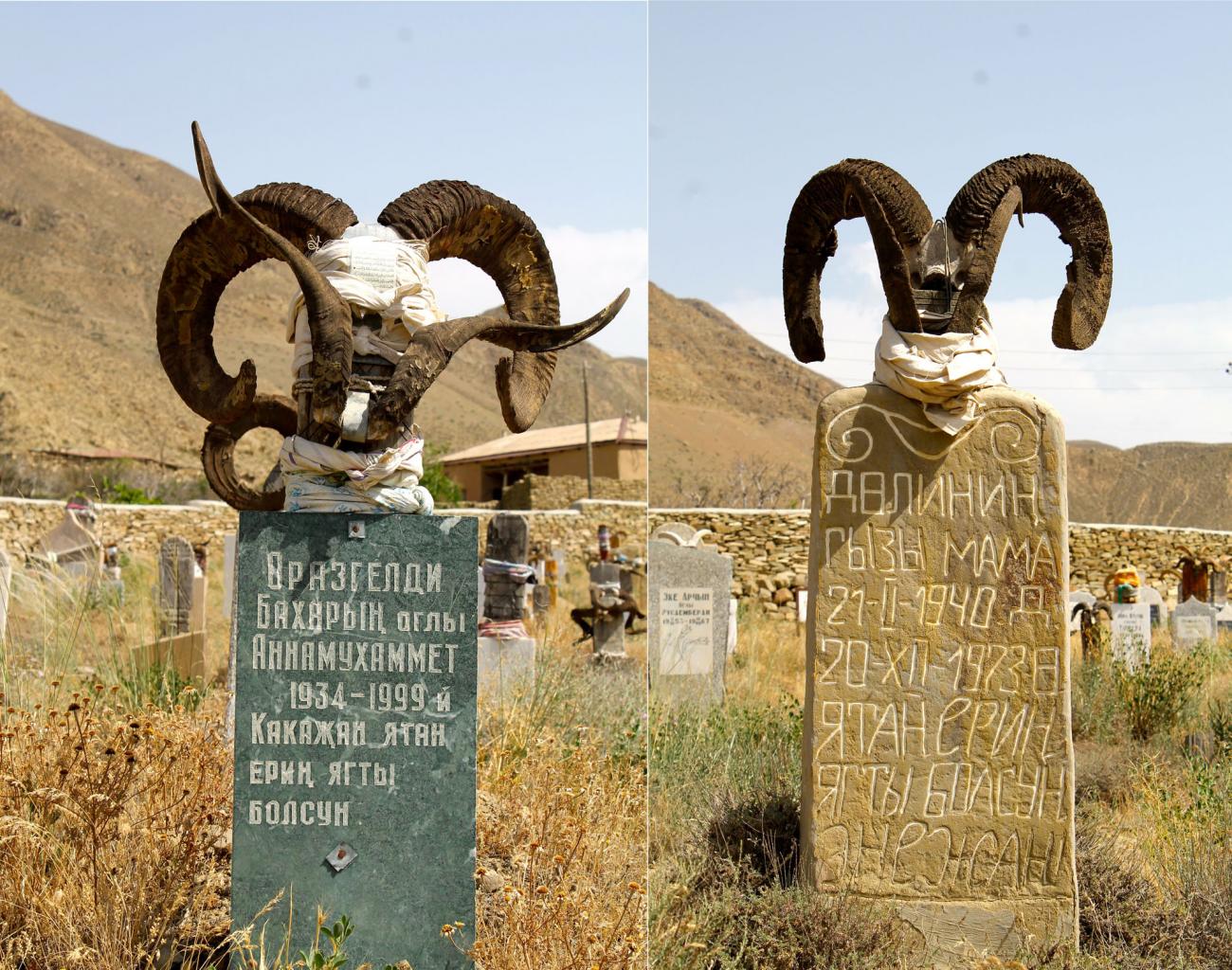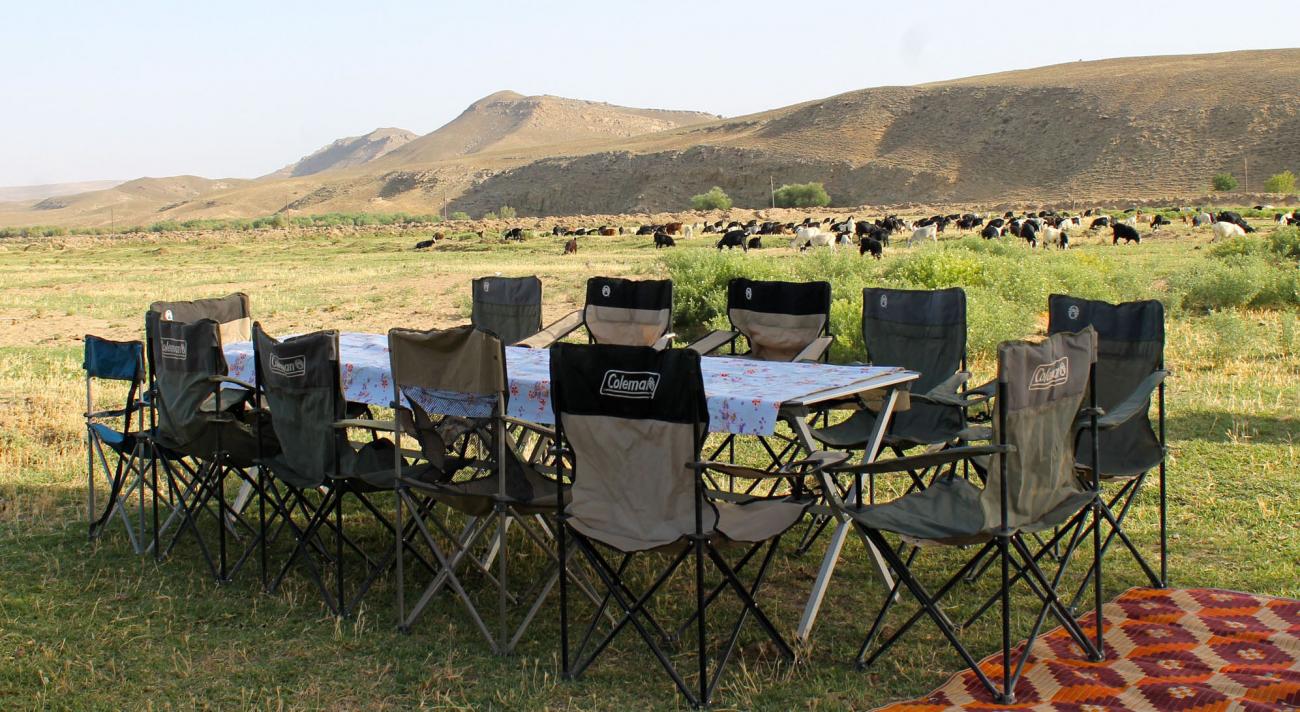It didn’t take long to leave the glaringly white, dazzlingly surreal, marble city of Ashgabat, so close is the ever-encroaching desert. If ever there was a prime example of man’s wish – and inability - to tame nature, this must be it. No amount of tree planting on these desert plains in the shadow of the looming Kopet Dag mountains will deter the sands from constantly shifting, whirling up into stunning dust storms that envelop the city, making the marble buildings look like Greek statues shrouded in fine gauze.
So what better than to actually go out into the mountains themselves, into the wilds of nature and see another aspect of this remote, rarely-explored country of Turkmenistan. We left the main highway and the stream of lorries hurtling along on the bumpy surface between the Caspian Sea port of Turkmenbashi and the Iranian border and headed up into the mountains. The irrigated valley was soon lost to view as we twisted and turned through the craggy rocks on a road sometimes metalled, more often dirt track.
Our destination was Nohur, a small village nestling in the mountains just thirty kilometres from the Iranian border, although the road stops some twenty kilometres short. We had come to see a remarkable cemetery and were not disappointed. A rusting metal gate led into a graveyard, about half an acre in total, completely full of carved wooden or stone headstones adorned with a variety of goats' horns. The villagers are Muslims but this tradition stems from the pre-Islam days, and reveals the inhabitants original animist traditions which they have incorporated into their interpretation of Islam.

Most were decorated with small horns whilst a few sported large, black horns or, on one instance, two pairs of horns and a pair of deer antlers. One-up-man-ship, even after death? Others had the addition of a tea kettle or cooking pot resting on the dried grass mound. Notches carved into the wood indicated steps to assist the person in their climb to the afterlife. Small stools were arranged around a freshly filled grave, presumably for family and friends to come and chat/commune with the departed.
We continued further up the mountain pass and reached a high plateau with a panoramic view; layer upon layer of mountain range spread before us. A warm wind blew and the smell of artemisia filled the air. Dropping down, we came to a valley of pasture and rocky outcrops – an ideal place to camp we decided.

Tents were erected, table and chairs set, vegetables chopped, salad prepared and, before we knew it, we were dining al fresco with a flock of goats and sheep gently grazing on the nearby grassy plains. A camel herd shuffled past, swallows swooped and silence reigned as we contemplated on what a day of variety it had been; breakfast in the gleaming white capital and dinner in a green pasture with extraordinary scenery and fascinating villages in between.
Jude is currently leading our Turkmenistan: The Forgotten 'Stan group tour.





